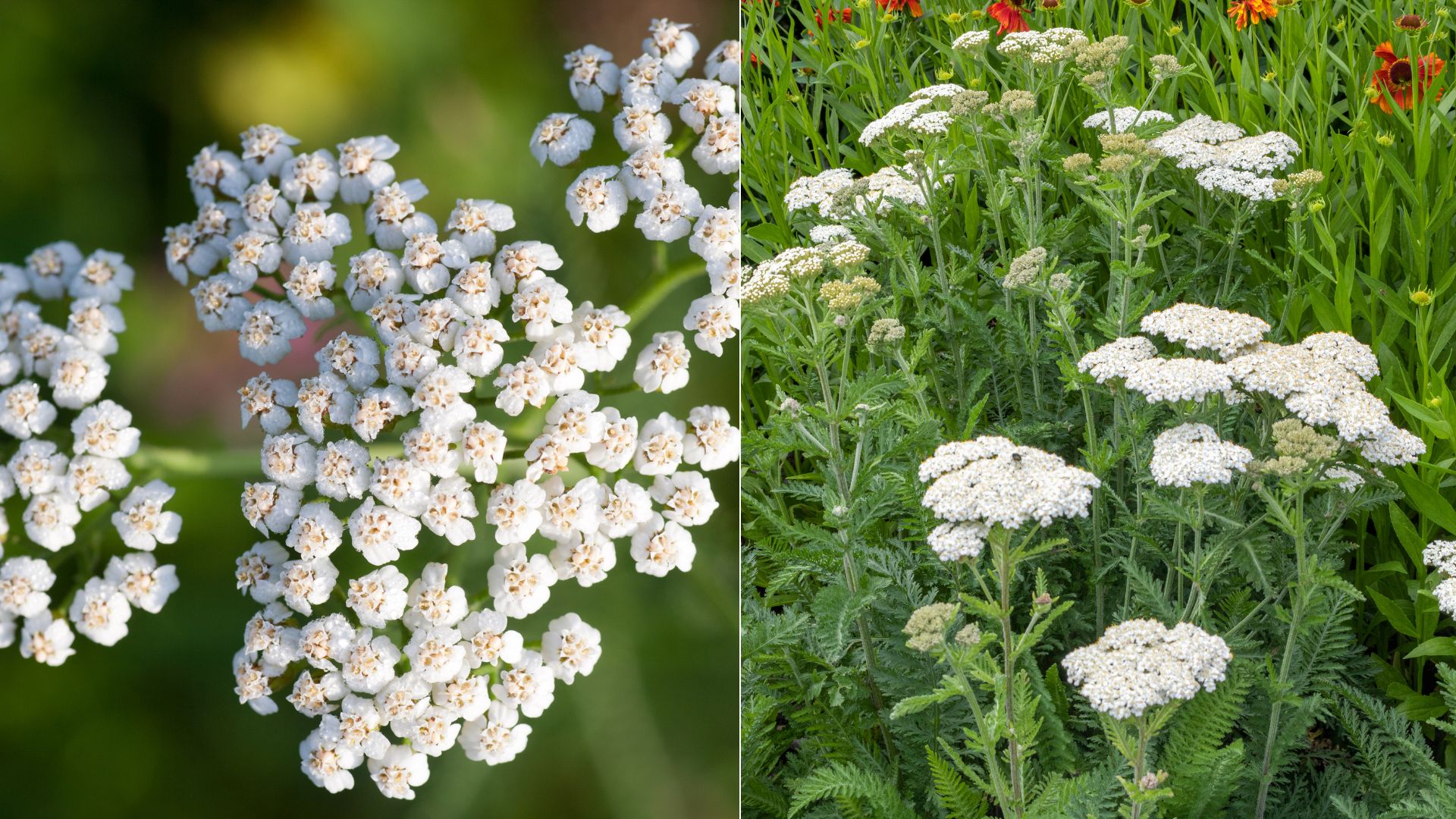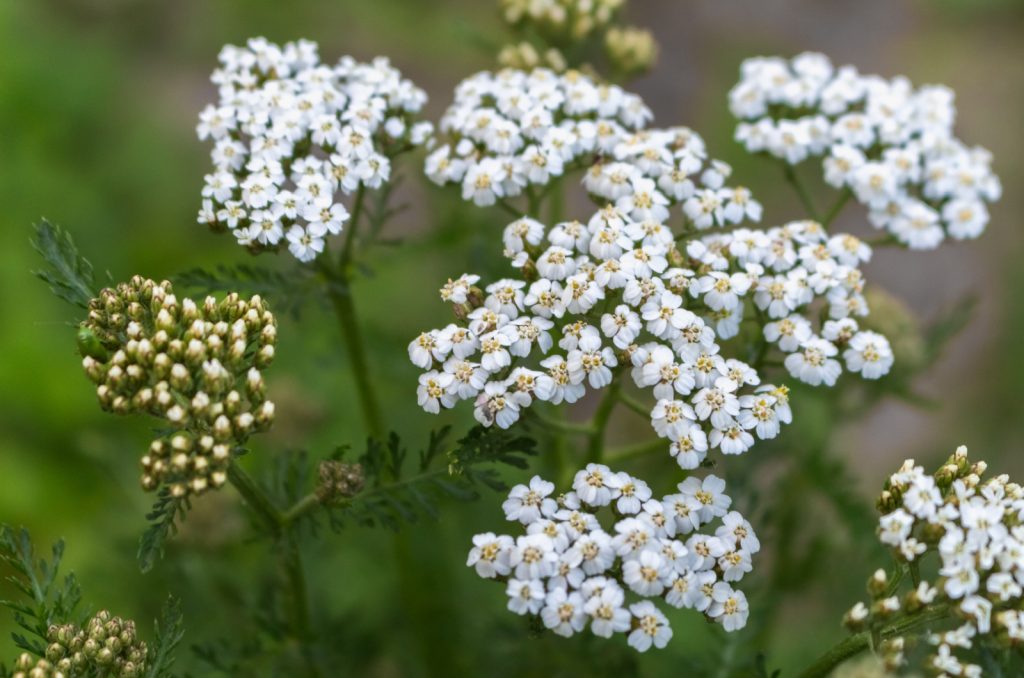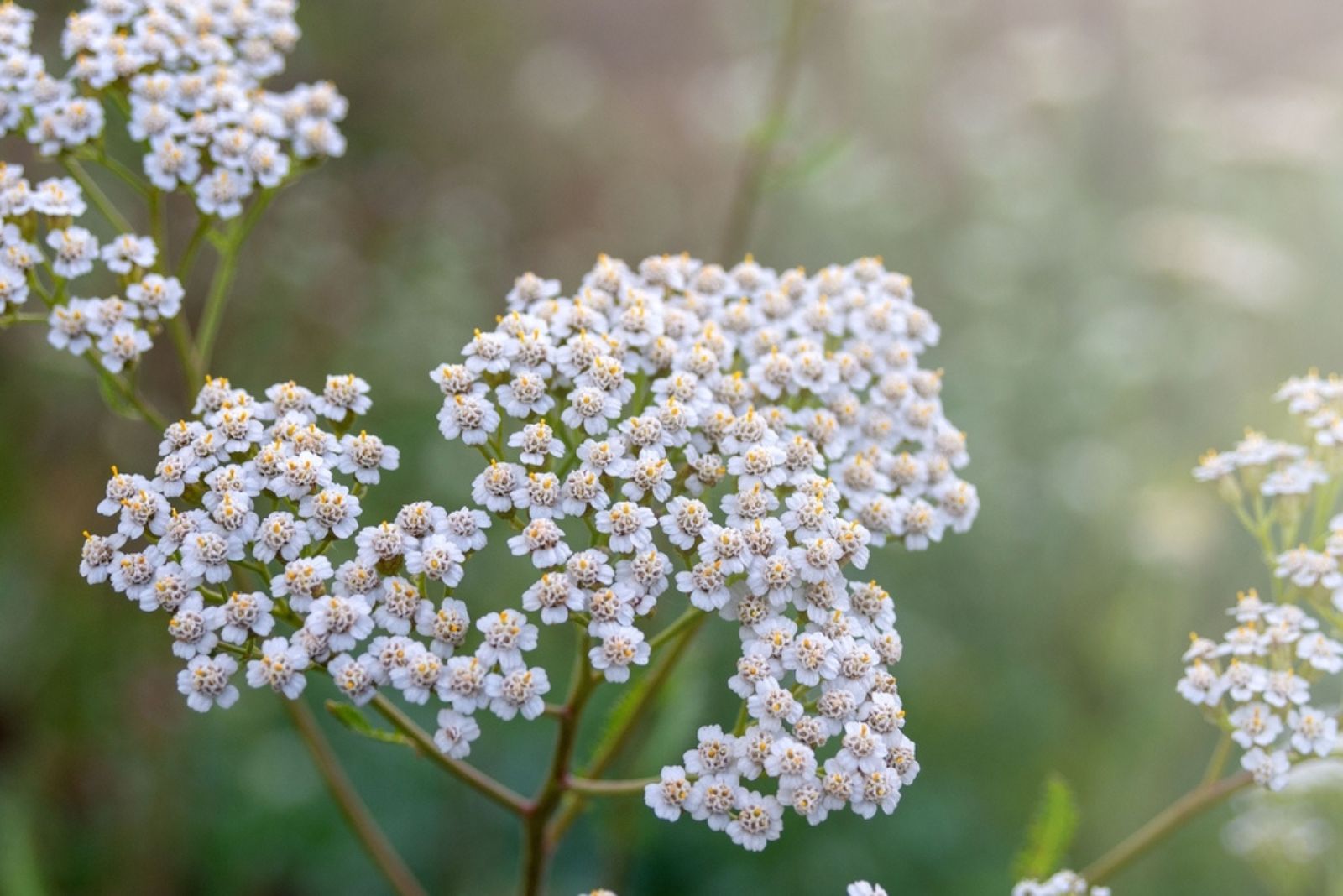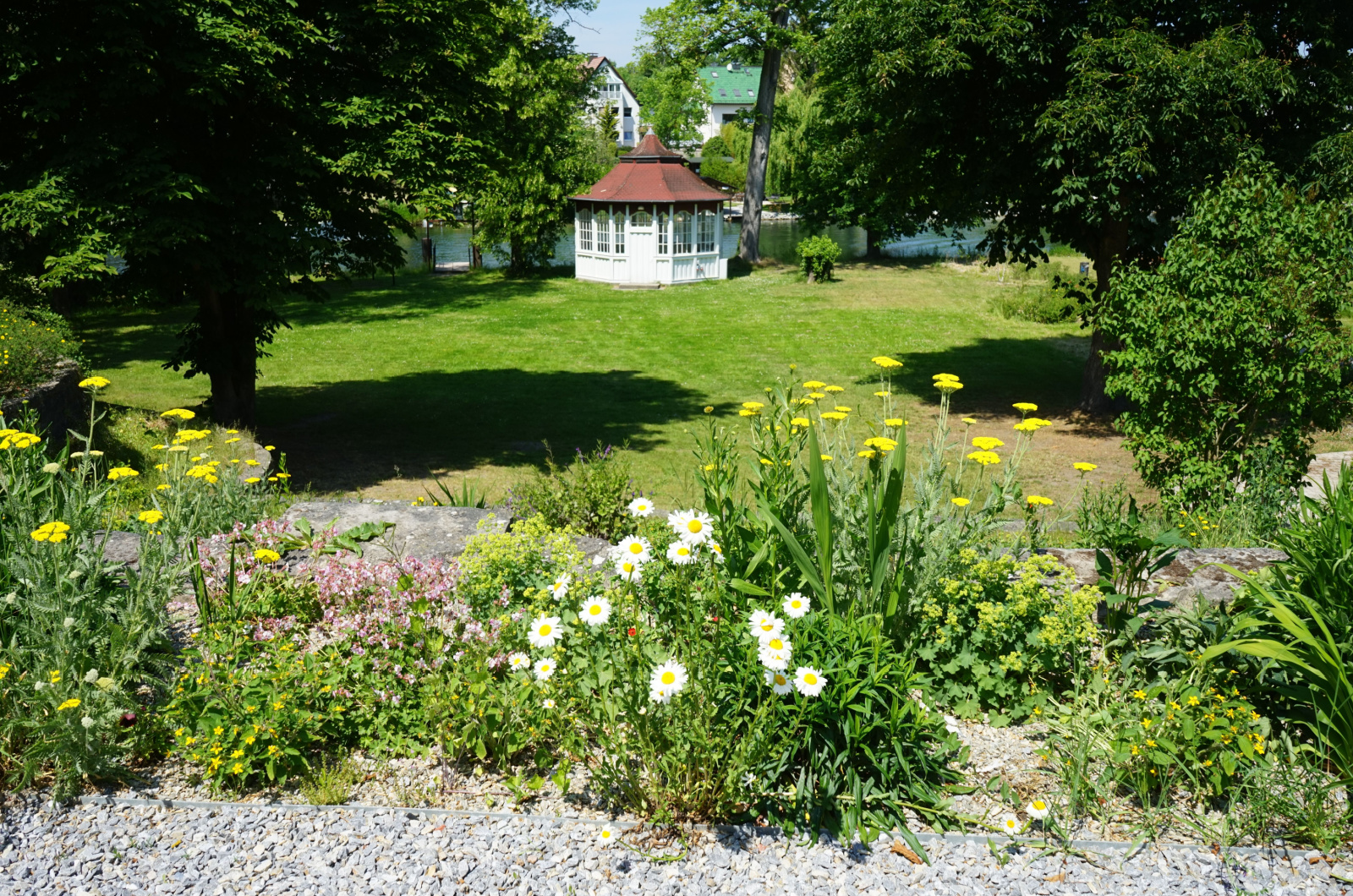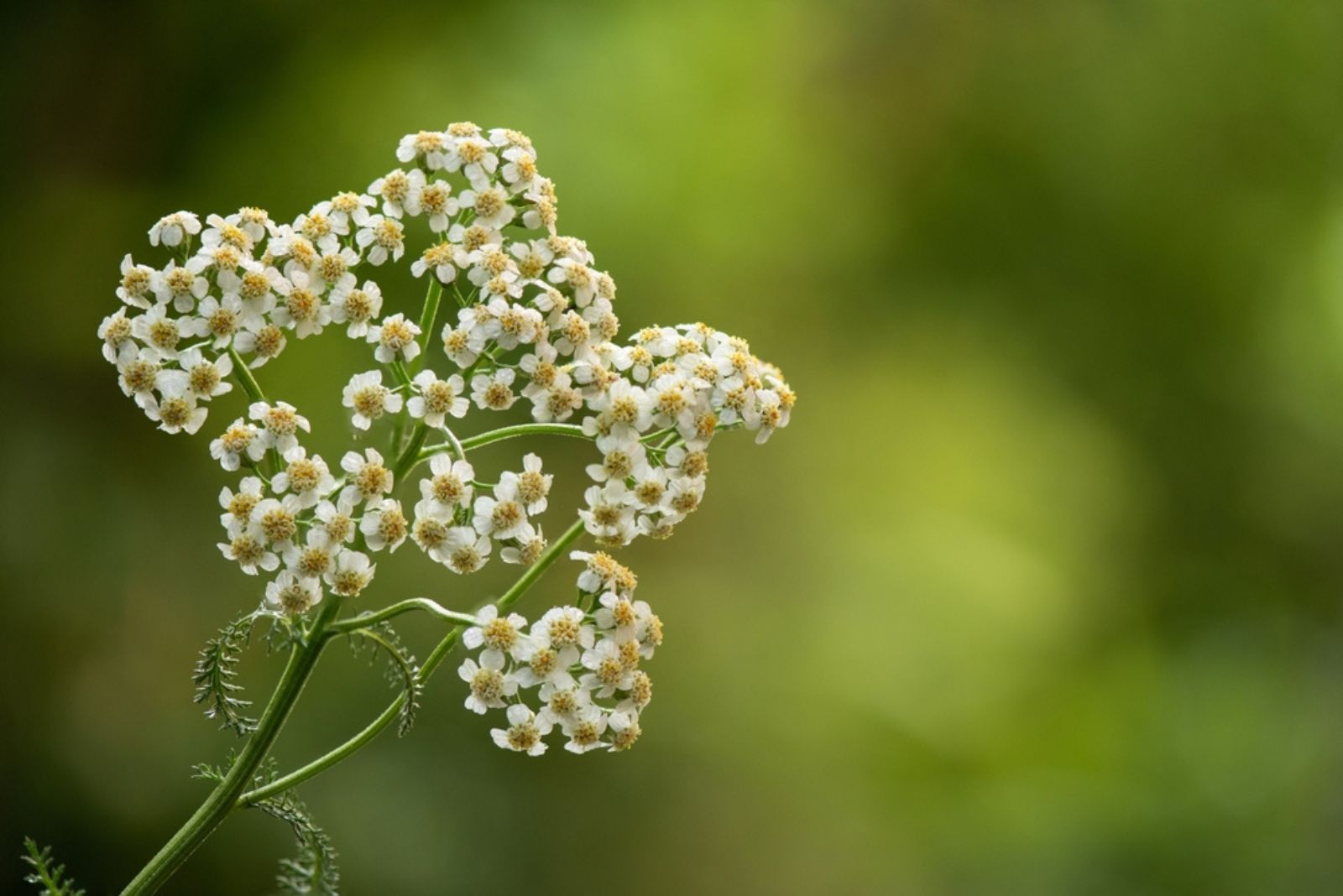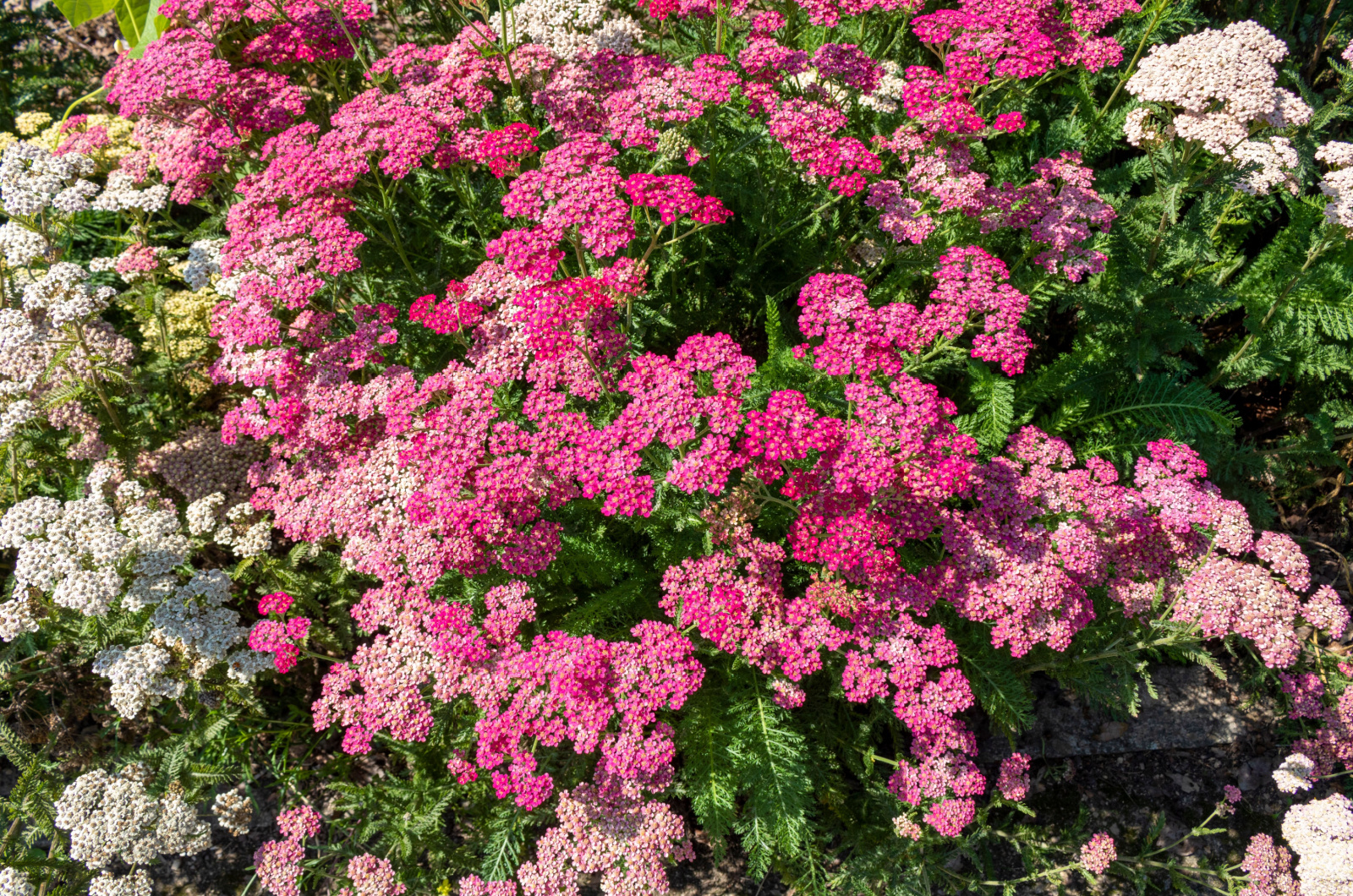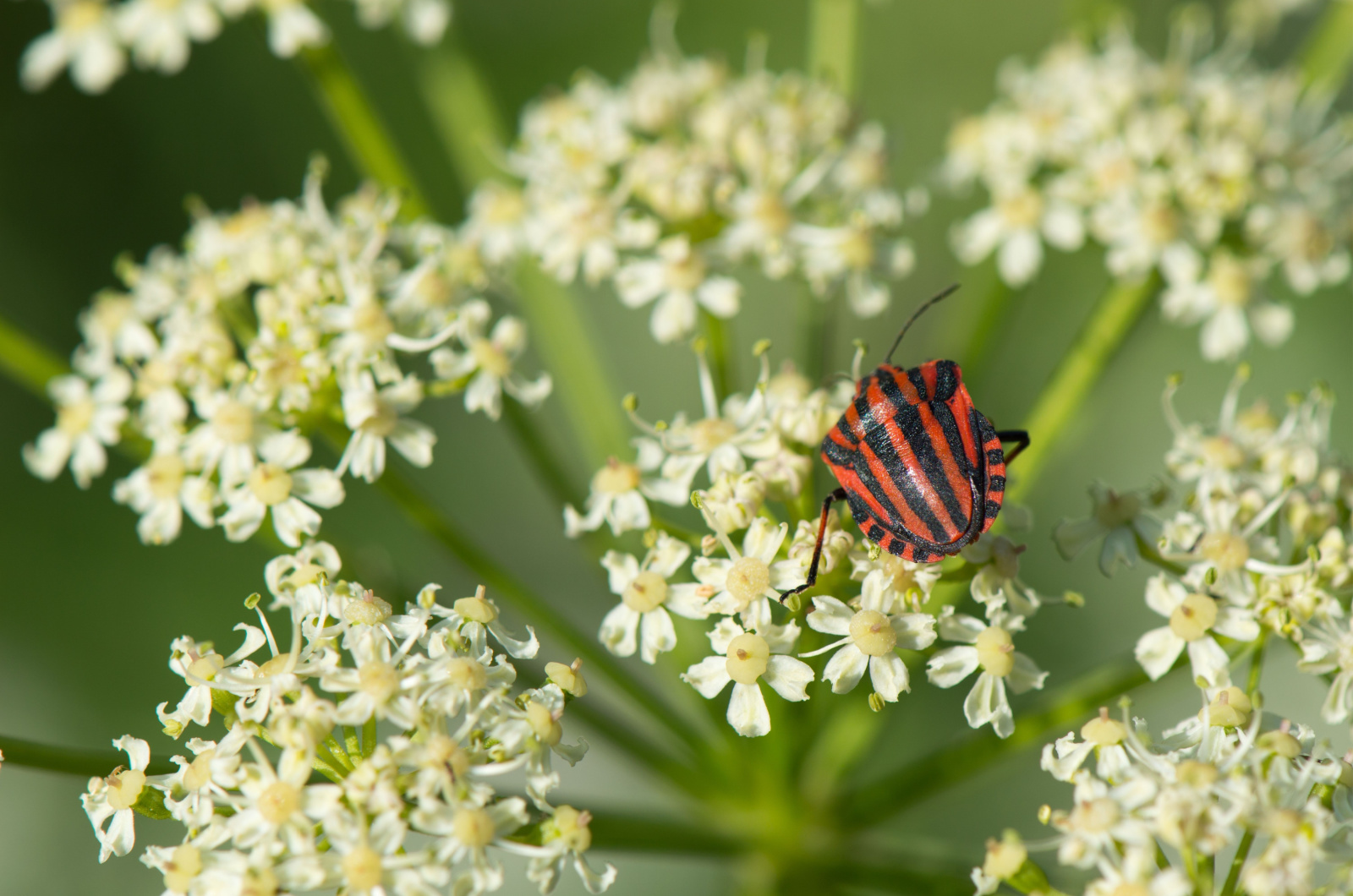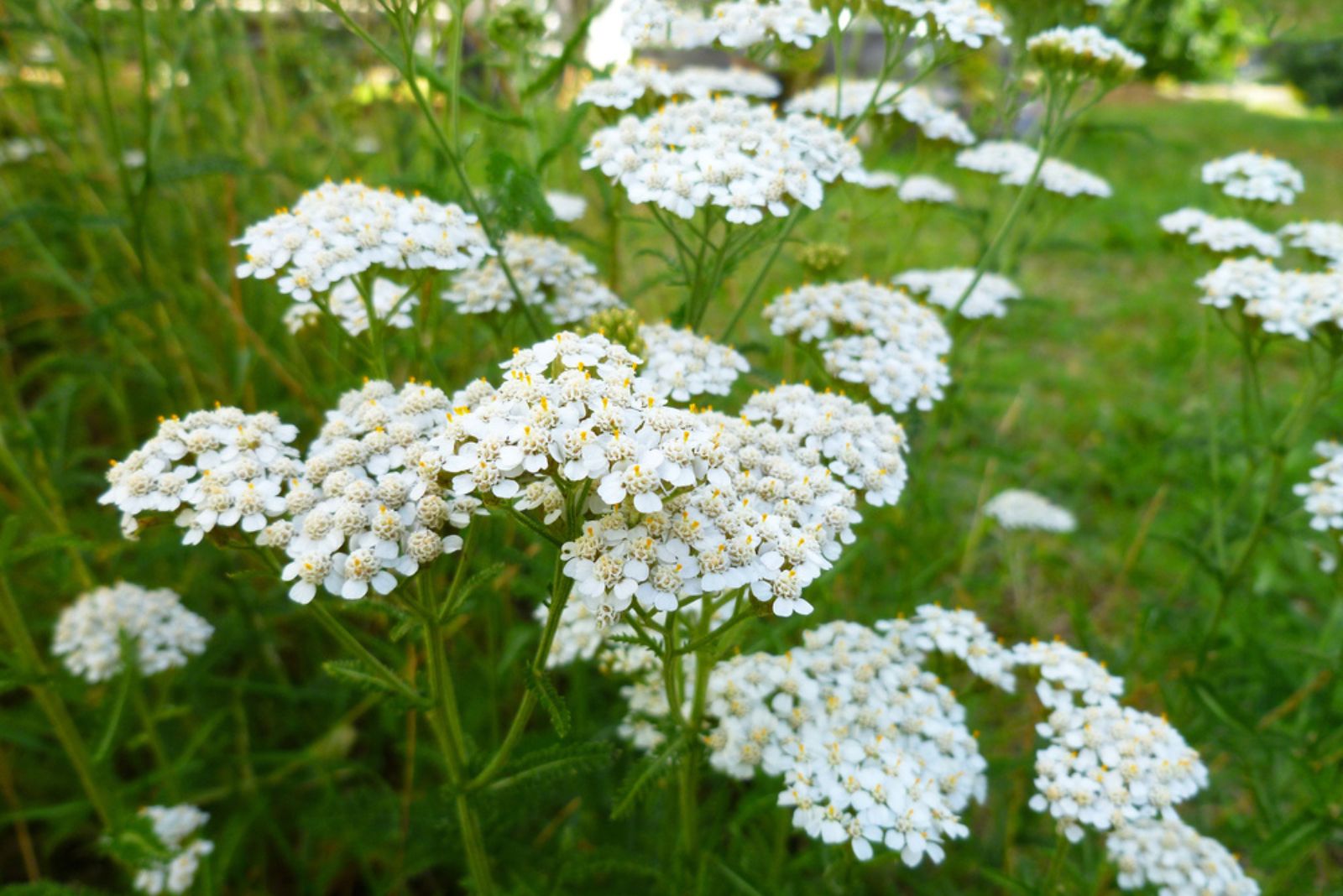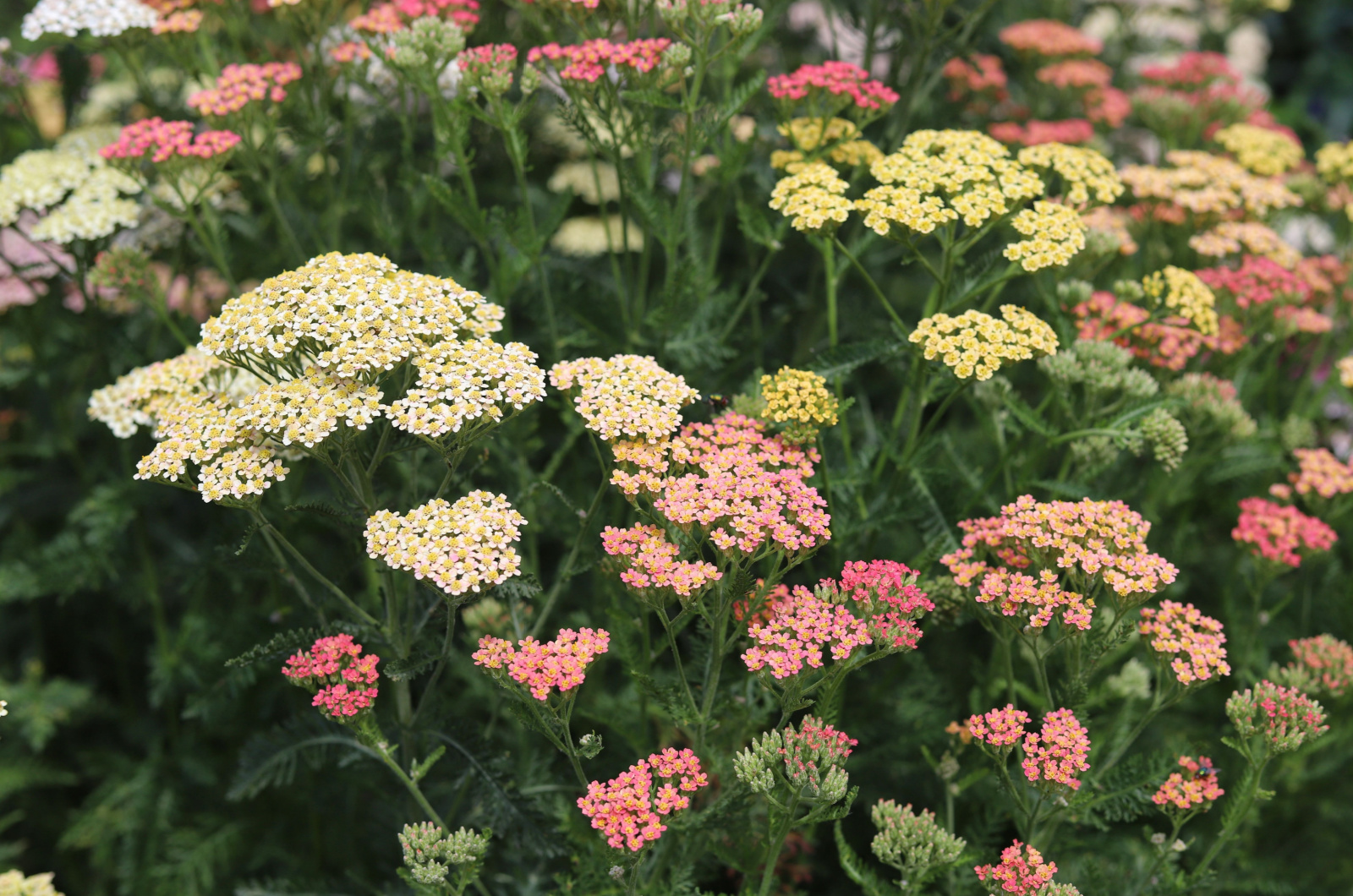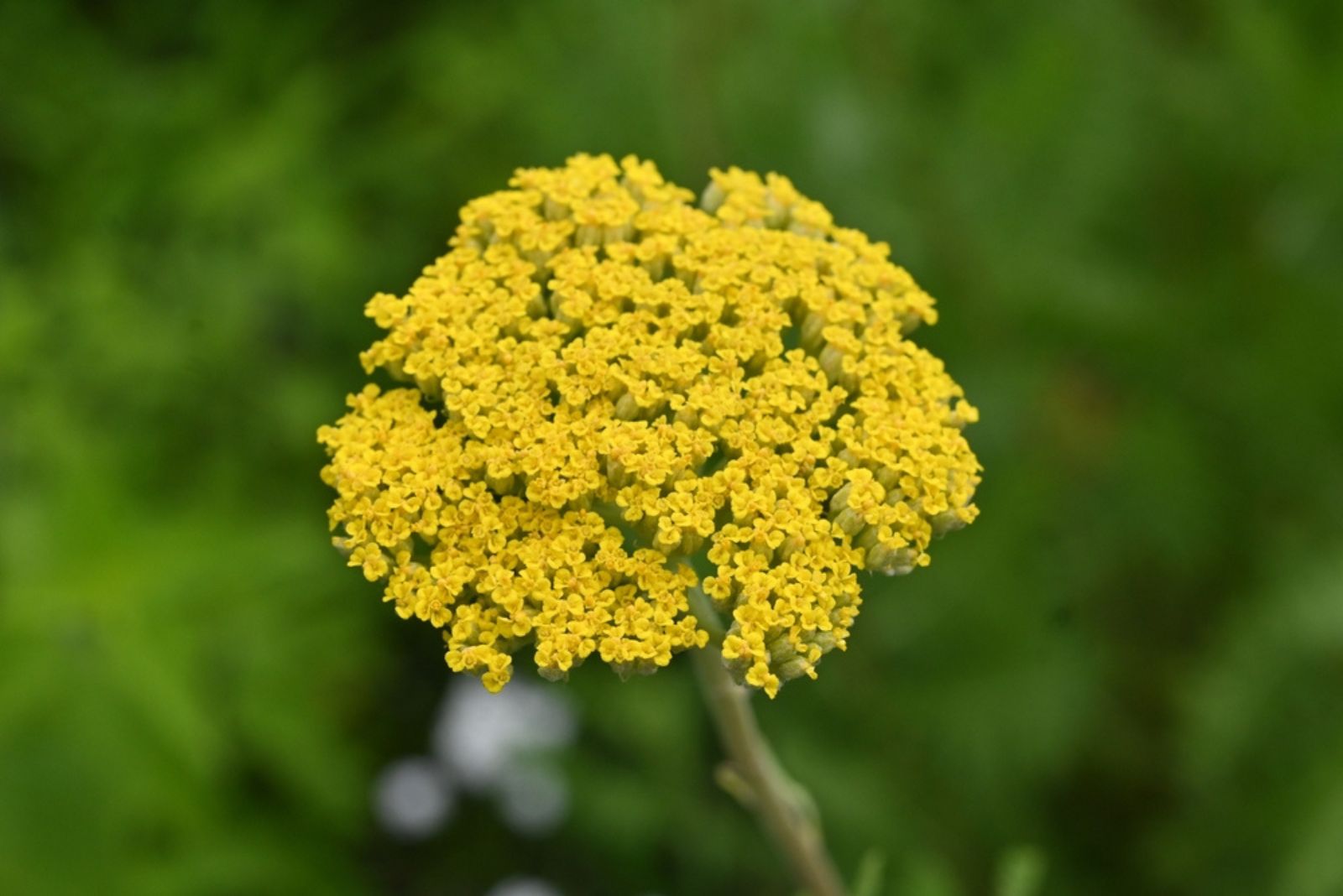Yarrow is an incredibly popular garden plant, and for good reason. It is easy to grow and maintain, attracts numerous pollinators and predatory insects, and looks stunning when scattered around a vegetable garden or grown as a ground cover.
And what’s more, these aren’t the only benefits of yarrow. It can take root pretty much anywhere and comes in many different shades, including bi-color species.
Discover more advantages of yarrow in the following sections and don’t hesitate to add a couple of these perennials to your garden.
1. Easy To Grow And Maintain
The first thing most novice and experienced gardeners like to hear is that a certain plant is easy to grow and maintain.
And that’s exactly the case with yarrow. This North America native almost takes care of itself when established, but you will have to help it get there.
It prefers loamy soil with good drainage, but will even grow in clay as long as it doesn’t stay wet for too long. Just make sure to water it regularly after transplanting until it gets established, and that’s it.
Later on, you can apply some slow-release organic fertilizer in spring as the new growth appears and thin it to prevent crowding.
P.S. If you take out plants with roots still intact, you can just move them to a new location or throw them into compost if you have no room left.
2. Drought-Tolerant
This benefit goes hand in hand with the first. Since yarrow is drought-tolerant, you won’t have to water it too frequently, making its maintenance a lot easier.
It does require about an inch of water per week, but if you live in a region that gets plenty of rainfall, you might not need to irrigate it at all.
You can use it to create a water-saving xeriscape and combine it with cactus and succulent plants.
Yarrow has deep roots, which is why it tolerates dry conditions so well. Therefore, add it to your rock garden and mix in some other flowering drought-resistant plants to attract more pollinators.
3. Companion Planting
Companion planting is a great way to reap the benefits of various flowers and veggies. It saves space, helps with pest control, and ensures there are more than enough pollinators in your vegetable garden.
Yarrow companion plants include apple trees, blueberries, strawberries, brassicas, lavender, thyme, oregano, spinach, eggplant, roses, and many more.
You can use this plant as a trap crop, to attract pollinators and predatory insects, and to repel pests such as deer and rabbits.
Simply intersperse it around your garden and good things will follow.
4. Perennial Wildflower
Yarrow is a hardy perennial that you can safely add to your flower beds. It self-seeds and will establish a small colony in the following years without even trying.
Therefore, you only need to plant a single yarrow to get a gorgeous garden. Just remember to keep it in check if you don’t want it spreading everywhere.
You can also help your entire garden ecosystem by planting species specifically native to North America, such as common yarrow (Achillea millefolium).
This variety will attract native pollinators and won’t invade and push out other natives from your garden.
5. Gorgeous Ground Cover
It might not be a creeping plant or a vine, but yarrow still makes for an effective and gorgeous ground cover.
This perennial self-seeds and spreads by rhizomes, which means it can form larger clusters year after year, covering more ground.
Yarrow foliage is located low and forms thick rosettes near the soil surface. As the plants spread, the leaves form a dense mat that looks amazing and prevents weeds from emerging.
6. Erosion Control
Planting yarrow is an excellent way to combat erosion and have your landscape looking good while doing it.
Just like any plant, yarrow roots will hold the soil in place and stabilize it. Additionally, it can reduce runoff erosion by absorbing the rain and water and slowing the speed of the runoff. (1)
Therefore, if you have bare hills or slopes from which the soil is slowly washing away, you can plant yarrow to stabilize it and keep it in place.
7. Attracts Beneficial Bugs
Planting yarrow is a surefire way to get more beneficial bugs in your garden, such as pollinators and predatory insects.
It blooms from April to October, so it has more than enough time to attract bees, butterflies, hoverflies, etc.
Therefore, yarrow is an excellent choice for pollinator gardens, or you can scatter a few plants in your vegetable patch.
It will attract predatory insects, such as ladybugs and hoverflies, that will deal with pest infestations, while bees and butterflies will pollinate the veggies and give you a larger harvest.
8. Rabbit- And Deer-Resistant
Another benefit of yarrow is that it is one of the flowers that deer and rabbits hate to nibble on.
It has a bitter taste and textured leaves that these large nuisances can’t stand. However, they will take a few bites when the plant is very young, but they typically leave older plants alone.
Therefore, you can try interplanting yarrow with flowers and vegetables you like to keep them safe from deer and rabbits.
Look at it this way: the more unappealing plants you grow in your garden, the harder it will be for these munchers to find the ones they like, making them more likely to give up on their quest for food.
9. Organic Soil Enrichment
There is plenty of anecdotal evidence online that claims how yarrow can accumulate certain nutrients (potassium, calcium, magnesium) in its tissue and give it back to the soil.
The notion is that this plant has a long taproot and mines further than other plants for these nutrients.
However, there is no scientific evidence that supports this statement, so we can’t be 100% certain.
And yet, if you want to enrich your substrate with nutrients, you can mow yarrow at the end of the season, shred it, and use it as mulch. It will decompose over time, enriching your soil with organic matter and minerals.
10. Abundance Of Varieties
If you think yarrow is ordinary and uninteresting, think again. It’s more than the white flat-topped flower we’re all used to seeing.
Natives are usually white, but you can opt for pink, yellow, purple, red, and orange shades, too.
Leaf and flower shapes, together with shades, vary from cultivar to cultivar, but you will still be able to easily recognize this plant.
11. Looks Stunning
I believe that all these reasons are more than enough to add a couple of yarrow plants to your backyard.
And if they’re not, just remember that this plant looks gorgeous with its colorful flat flower heads and soft and feathery green leaves.
It clads itself in deep green shades in spring and shows off its blossoms from mid-spring throughout fall.
You can enjoy its mass flowers in the garden or cut a few for your vases and flower arrangements.
Final Thoughts
I hope these 11 yarrow benefits were more than enough to convince you that you need this plant in your garden. (If not, I don’t know what is!)
It looks stunning in any setting, as a ground cover, interspersed among vegetables or flowers, and as a part of your very own pollinator garden.
Yarrow is an excellent companion to almost any plant, it is incredibly easy to grow and can even enrich your soil if you use it correctly.
References: 1. StormSmart Properties Fact Sheet 3: Planting Vegetation to Reduce Erosion and Storm Damage (2013). Massachusetts Office of Coastal Management.

